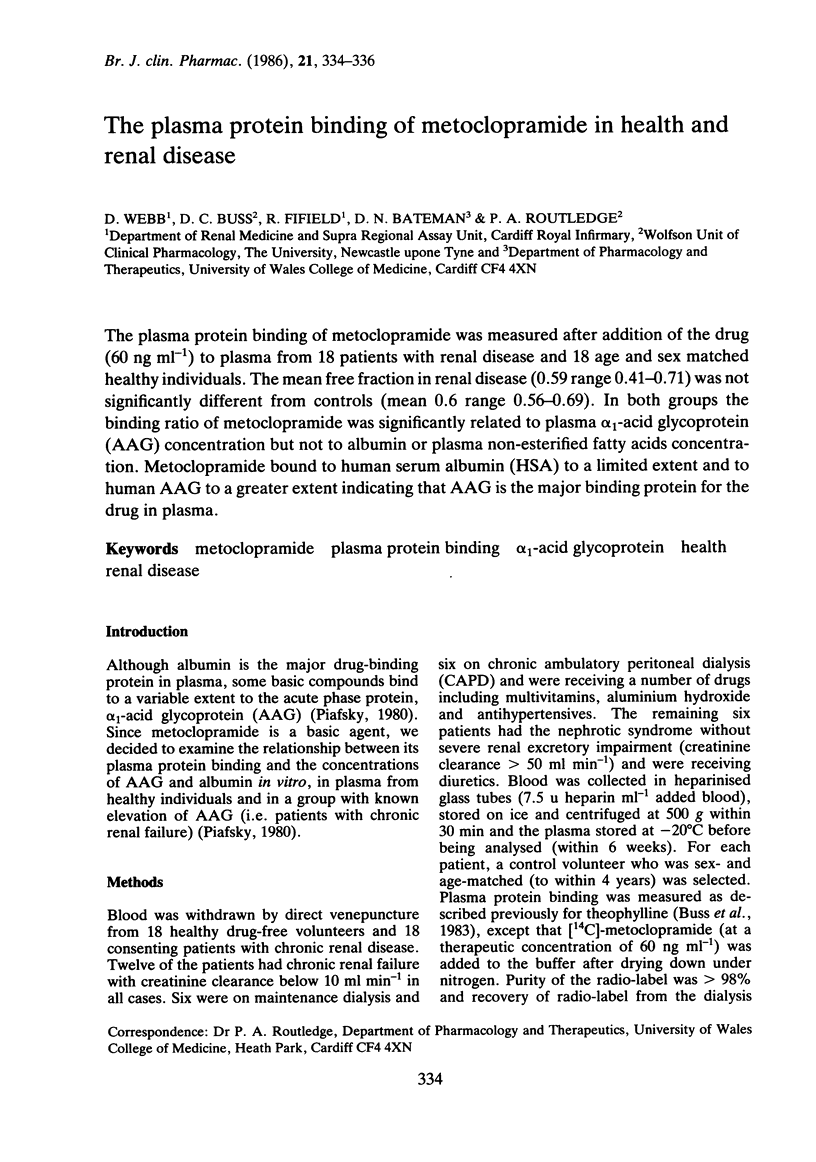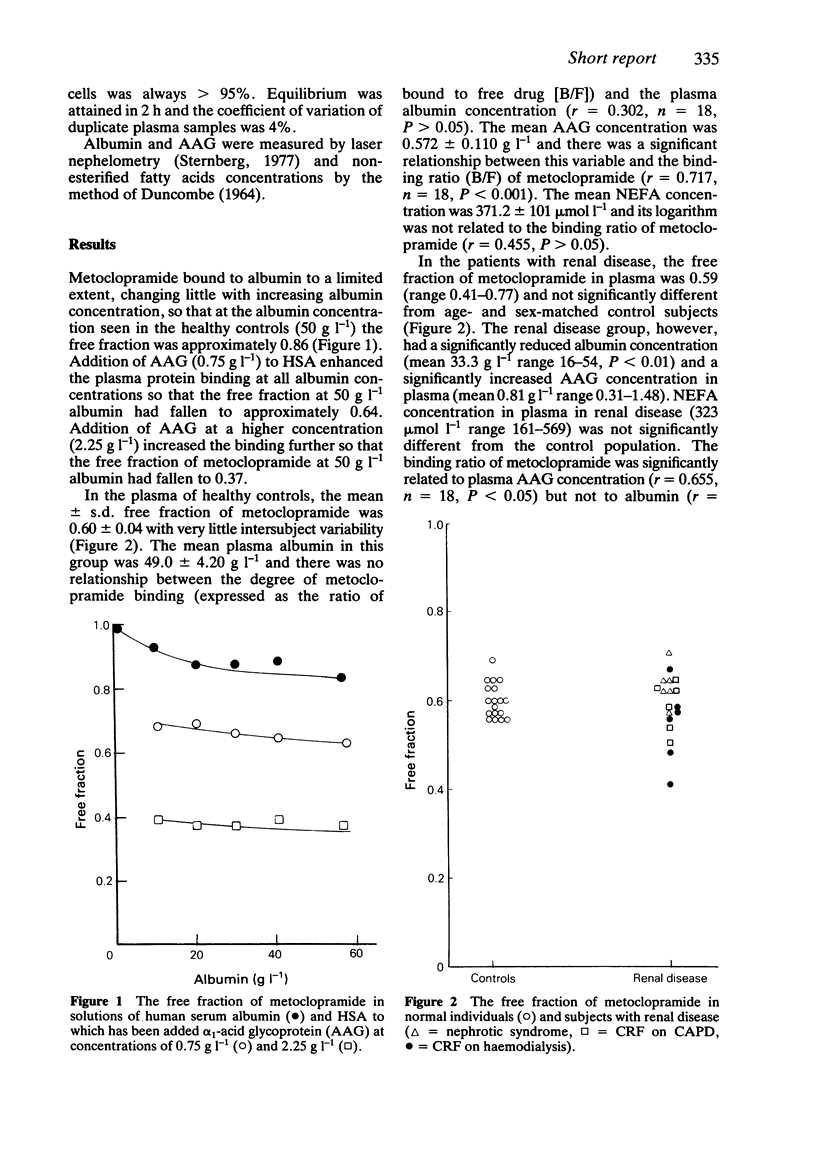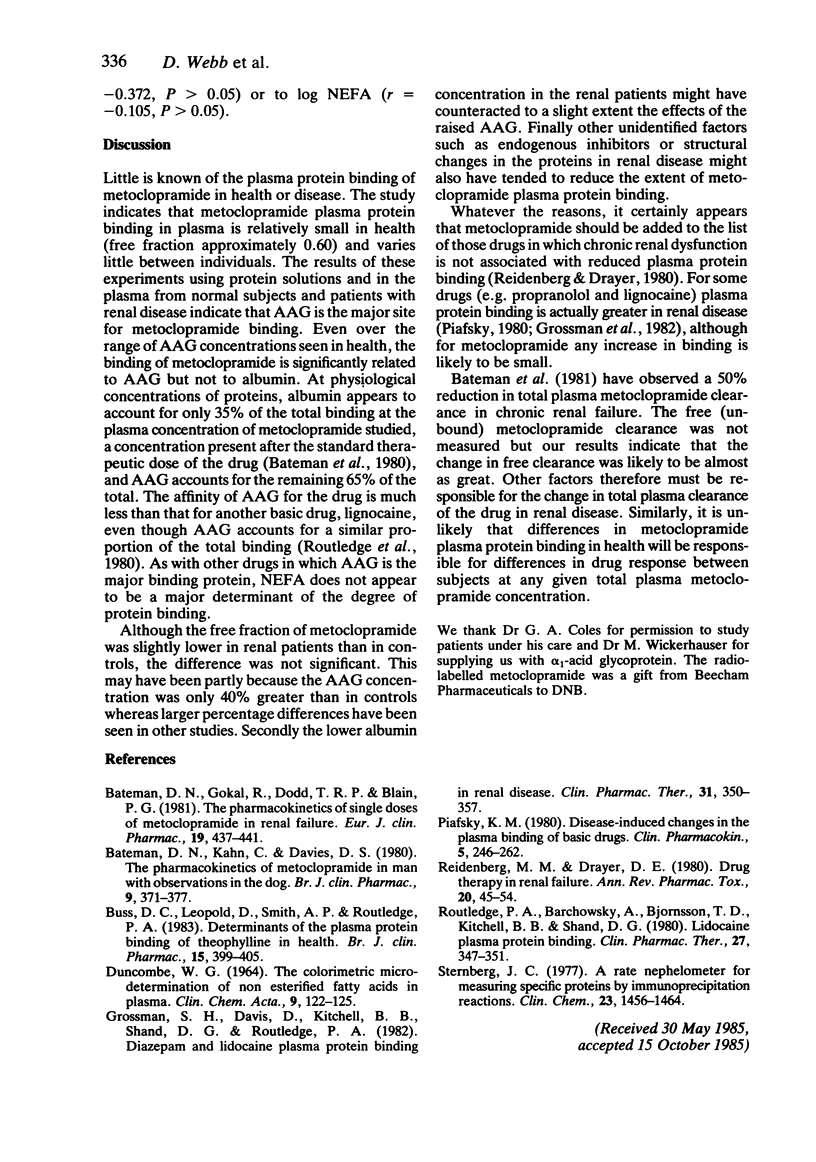Abstract
The plasma protein binding of metoclopramide was measured after addition of the drug (60 ng ml-1) to plasma from 18 patients with renal disease and 18 age and sex matched healthy individuals. The mean free fraction in renal disease (0.59 range 0.41-0.71) was not significantly different from controls (mean 0.6 range 0.56-0.69). In both groups the binding ratio of metoclopramide was significantly related to plasma alpha 1-acid glycoprotein (AAG) concentration but not to albumin or plasma non-esterified fatty acids concentration. Metoclopramide bound to human serum albumin (HSA) to a limited extent and to human AAG to a greater extent indicating that AAG is the major binding protein for the drug in plasma.
Full text
PDF


Selected References
These references are in PubMed. This may not be the complete list of references from this article.
- Bateman D. N., Gokal R., Dodd T. R., Blain P. G. The pharmacokinetics of single doses of metoclopramide in renal failure. Eur J Clin Pharmacol. 1981;19(6):437–441. doi: 10.1007/BF00548588. [DOI] [PubMed] [Google Scholar]
- Bateman D. N., Kahn C., Davies D. S. The pharmacokinetics of metoclopramide in man with observations in the dog. Br J Clin Pharmacol. 1980 Apr;9(4):371–377. doi: 10.1111/j.1365-2125.1980.tb01064.x. [DOI] [PMC free article] [PubMed] [Google Scholar]
- Buss D., Leopold D., Smith A. P., Routledge P. A. Determinants of the plasma protein binding of theophylline in health. Br J Clin Pharmacol. 1983 Apr;15(4):399–405. doi: 10.1111/j.1365-2125.1983.tb01521.x. [DOI] [PMC free article] [PubMed] [Google Scholar]
- DUNCOMBE W. G. THE COLORIMETRIC MICRO-DETERMINATION OF NON-ESTERIFIED FATTY ACIDS IN PLASMA. Clin Chim Acta. 1964 Feb;9:122–125. doi: 10.1016/0009-8981(64)90004-x. [DOI] [PubMed] [Google Scholar]
- Grossman S. H., Davis D., Kitchell B. B., Shand D. G., Routledge P. A. Diazepam and lidocaine plasma protein binding in renal disease. Clin Pharmacol Ther. 1982 Mar;31(3):350–357. doi: 10.1038/clpt.1982.45. [DOI] [PubMed] [Google Scholar]
- Piafsky K. M. Disease-induced changes in the plasma binding of basic drugs. Clin Pharmacokinet. 1980 May-Jun;5(3):246–262. doi: 10.2165/00003088-198005030-00004. [DOI] [PubMed] [Google Scholar]
- Reidenberg M. M., Drayer D. E. Drug therapy in renal failure. Annu Rev Pharmacol Toxicol. 1980;20:45–54. doi: 10.1146/annurev.pa.20.040180.000401. [DOI] [PubMed] [Google Scholar]
- Routledge P. A., Barchowsky A., Bjornsson T. D., Kitchell B. B., Shand D. G. Lidocaine plasma protein binding. Clin Pharmacol Ther. 1980 Mar;27(3):347–351. doi: 10.1038/clpt.1980.46. [DOI] [PubMed] [Google Scholar]
- Sternberg J. C. A rate nephelometer for measuring specific proteins by immunoprecipitin reactions. Clin Chem. 1977 Aug;23(8):1456–1464. [PubMed] [Google Scholar]


